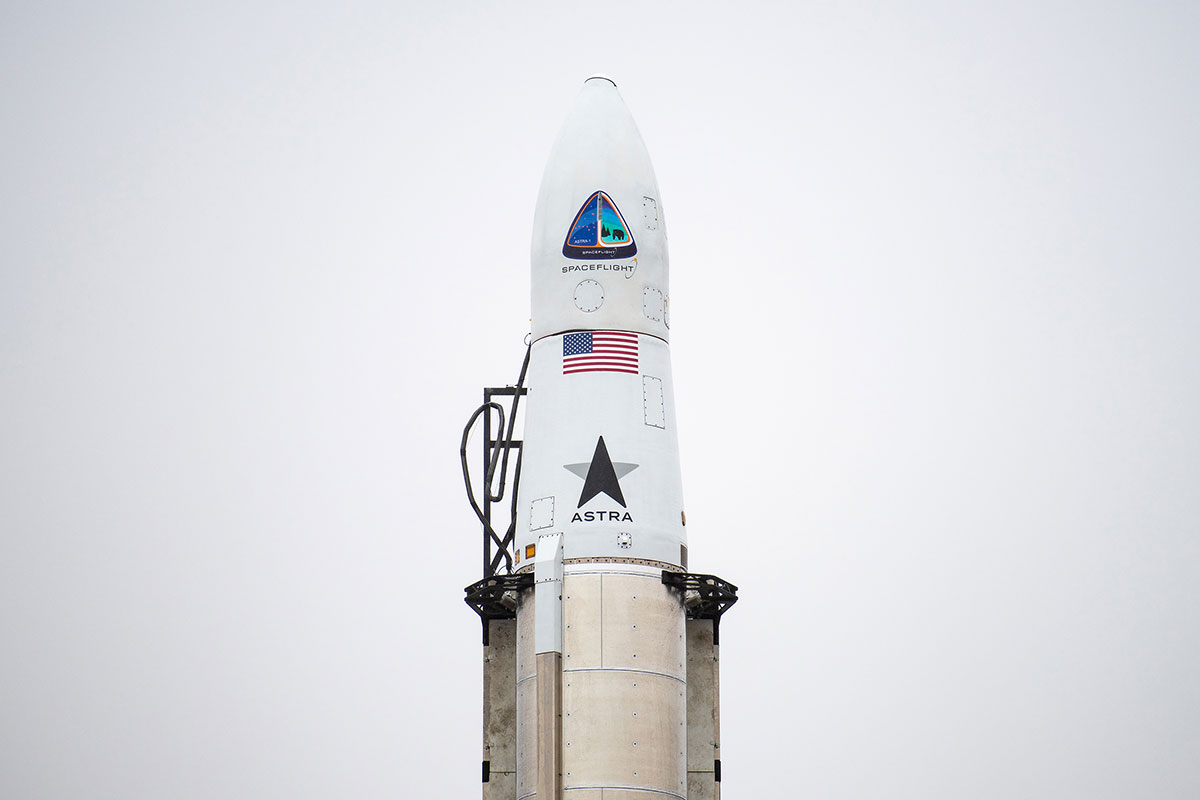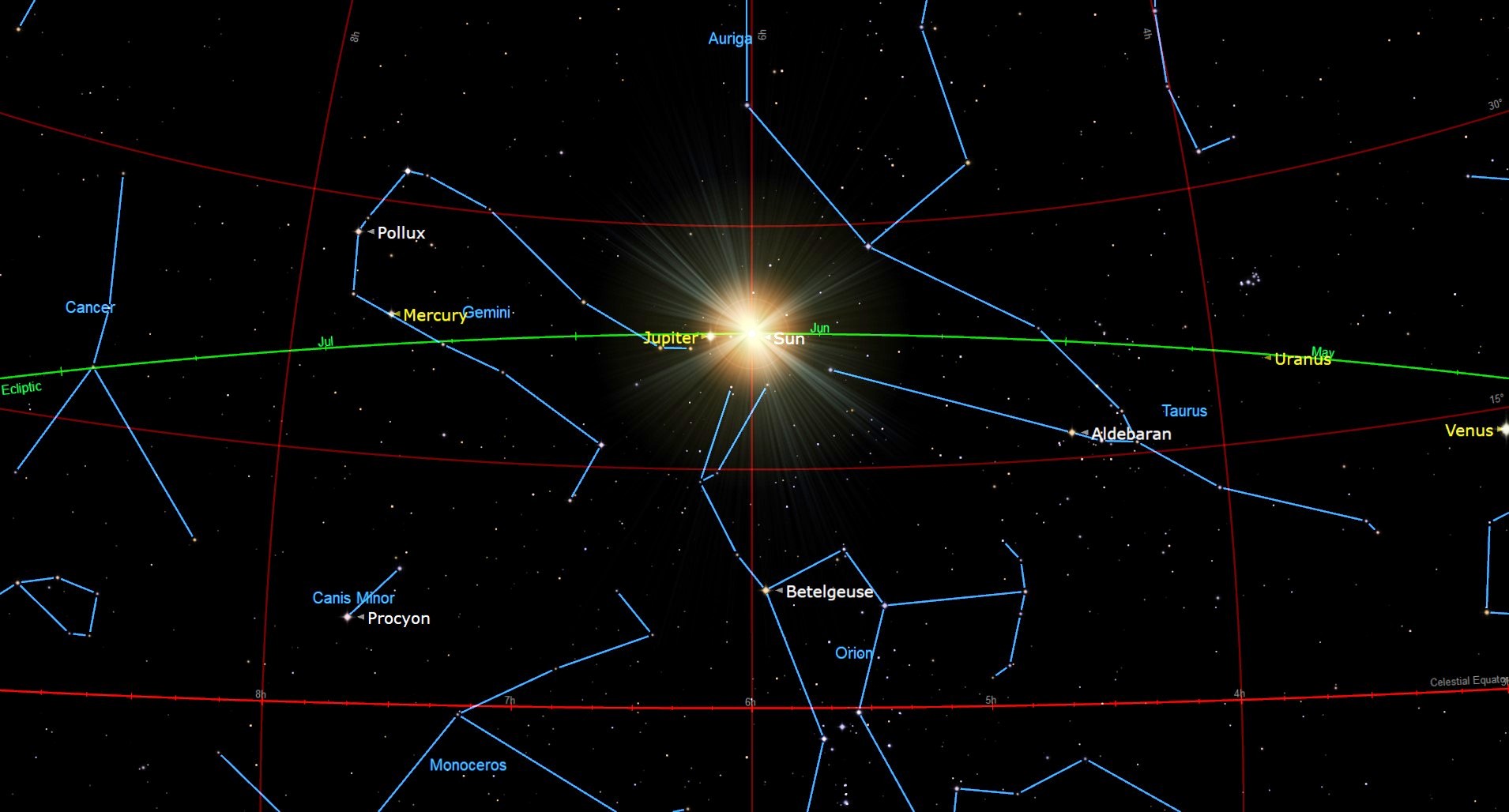You can watch Astra's return-to-flight rocket launch from Alaska today. Here's how.
The launch window reopens at 12:22 p.m. EDT (1622 GMT, 9:22 a.m. PDT).
Update for 2 p.m. EDT: Astra has launched its Astra-1 mission into orbit and has confirmed successful payload deployment. You can read our wrap story of the successful launch here.
The space startup Astra will attempt its first rocket launch since a failure in February today (March 15) and you can watch it live online.
An Astra Rocket 3.3 launch vehicle carrying three payloads for customer Spaceflight Inc. is scheduled to lift off at 12:22 p.m. EDT (1622 GMT, 9:22 a.m. PDT) from Pad LP-3B at the Pacific Spaceport Complex on Alaska's Kodiak Island. It will mark a return to flight for Astra after a Rocket 3.3 flight failed on Feb. 10 after launching from Florida, leading to the loss of 4 satellites for NASA's Educational Launch of Nanosatellites project.
You can watch Astra's planned launch live in the video feed above, courtesy of Astra and NASA Spaceflight, beginning at about 11:30 a.m. EDT (1530 GMT). You can also watch it directly from Astra's livestream page here. Today's launch try is Astra's second launch attempt after the risk of lightning prevented a Monday liftoff.
Video: Watch Astra's Rocket 3.2 launch on its 1st successful flight

Today's mission, called Astra-1, is the first of three flights for Spaceflight Inc. through 2025 under an agreement announced on Monday. It will carry three payloads, including one each for the company NearSpace Launch and the Portland Aerospace Society.
"We continuously look for opportunities to provide our customers access to flexible and reliable options to get to orbit,” said Curt Blake, CEO and president of Spaceflight Inc. in a statement. "By expanding our launch partner portfolio to include Astra, we can increase the launch opportunities available to our customers. Astra's willingness to explore creative launch solutions and shared dedication to customer success makes them a great partner."
Breaking space news, the latest updates on rocket launches, skywatching events and more!
The NearSpace Launch payload is called S4 Crossover and is a technology demonstrator that will test hardware for a host platform that can hold payloads on future missions. It will remain attached to the upper stage of the 43-foot-tall (13 meters) Rocket 3.3 vehicle, known as LV0009, after it reaches orbit.
The Portland Aerospace Society's payload is a small CubeSat called OreSat0 built by students at Portland State University in Oregon. As Portland State's first CubeSat, it's designed to prove out technologies to be used in a bigger CubeSat that will study cirrus clouds for global climate science research on a later mission.
All three payloads will be placed into an orbit about 326 miles (525 kilometers) above the Earth, Astra officials said in the statement.
The Astra-1 mission is the first flight for Astra since its LV0008 Rocket vehicle failed to reach orbit last month. During that mission, which also marked Astra's first launch from Florida instead of Alaska, the rocket's payload fairing failed to deploy properly and a software problem related to engine thrust vector control also occurred.
Both issues have since been address, Astra has said.
"With the root causes identified and corrective measures in place, we’re preparing to return to the launch pad with LV0009 soon," Andrew Griggs, Astra's senior director for mission management and assurance, wrote in a March 6 update.
Email Tariq Malik at tmalik@space.com or follow him @tariqjmalik. Follow us @Spacedotcom, Facebook and Instagram.
Join our Space Forums to keep talking space on the latest missions, night sky and more! And if you have a news tip, correction or comment, let us know at: community@space.com.

Tariq is the Editor-in-Chief of Space.com and joined the team in 2001, first as an intern and staff writer, and later as an editor. He covers human spaceflight, exploration and space science, as well as skywatching and entertainment. He became Space.com's Managing Editor in 2009 and Editor-in-Chief in 2019. Before joining Space.com, Tariq was a staff reporter for The Los Angeles Times covering education and city beats in La Habra, Fullerton and Huntington Beach. In October 2022, Tariq received the Harry Kolcum Award for excellence in space reporting from the National Space Club Florida Committee. He is also an Eagle Scout (yes, he has the Space Exploration merit badge) and went to Space Camp four times as a kid and a fifth time as an adult. He has journalism degrees from the University of Southern California and New York University. You can find Tariq at Space.com and as the co-host to the This Week In Space podcast with space historian Rod Pyle on the TWiT network. To see his latest project, you can follow Tariq on Twitter @tariqjmalik.
